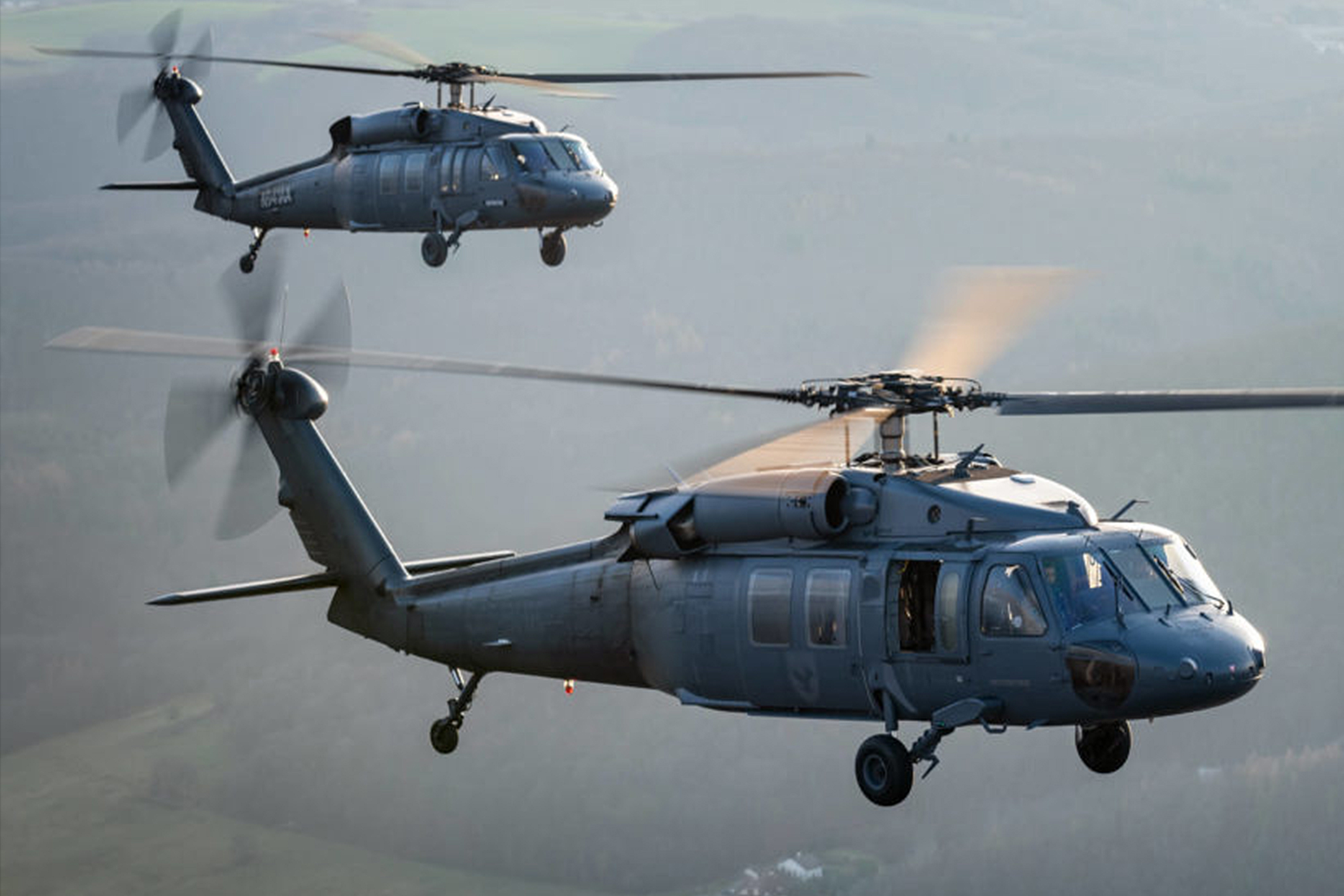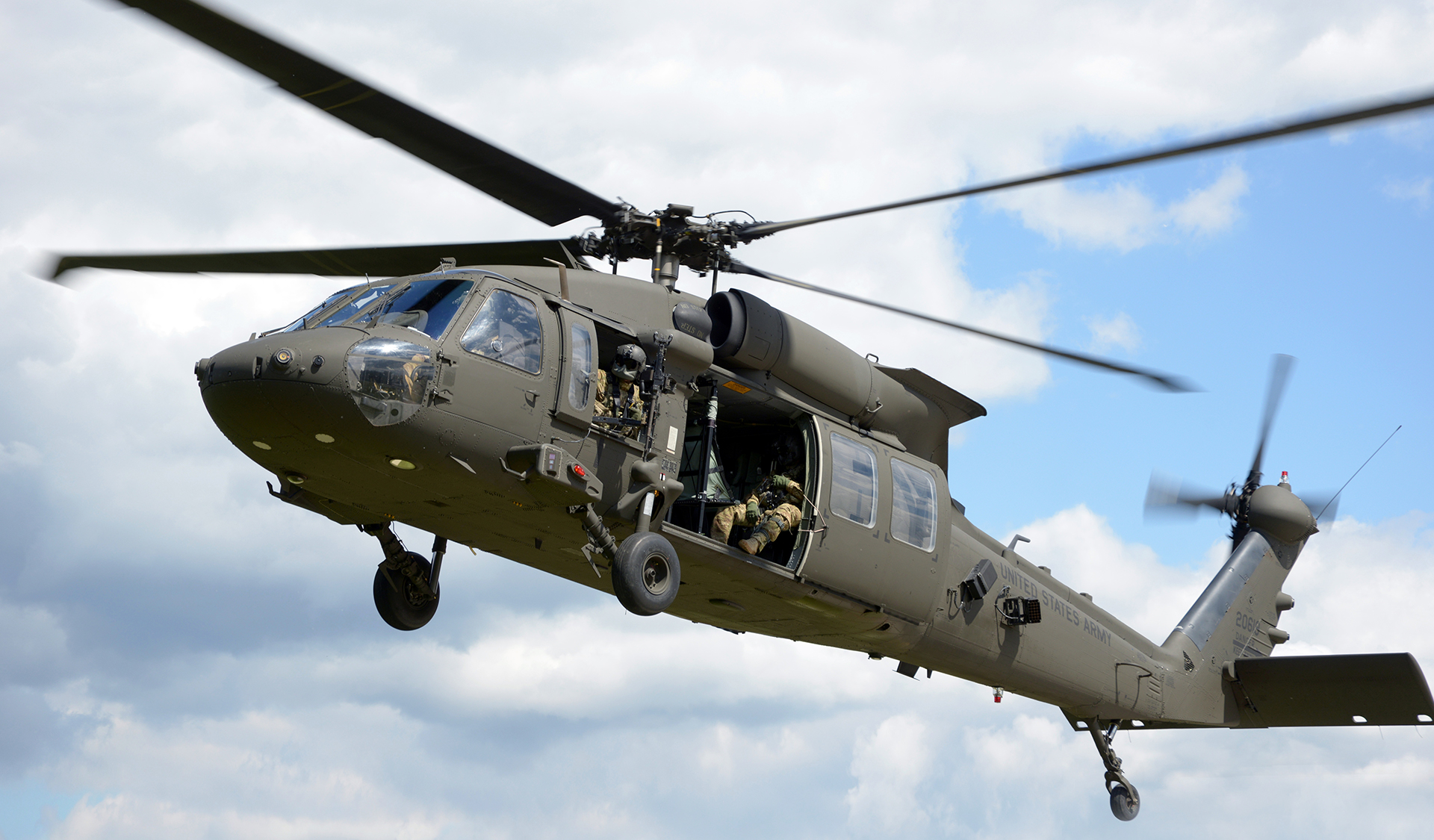What Makes the UH 60 Helicopter a Key Asset for Tactical Airlift Workflow
What Makes the UH 60 Helicopter a Key Asset for Tactical Airlift Workflow
Blog Article
UH-60: Technologies in Modern Helicopter Style
The UH-60 helicopter stands as a standard in modern aeronautics, showcasing considerable advancements in design and innovation that provide to the developing needs of armed forces operations. As we explore the evolution and vital innovations of the UH-60, it becomes necessary to think about exactly how these developments influence not only current applications however additionally the future landscape of helicopter layout.

Development of the UH-60
The evolution of the UH-60 Black Hawk helicopter stands for a substantial landmark in aerospace engineering and army aviation. Introduced in the late 1970s, the UH-60 was made by Sikorsky Aircraft to satisfy the United States Army's need for a functional energy helicopter with the ability of executing a selection of missions. Its style highlighted maneuverability, speed, and longevity, establishing brand-new requirements for operational efficiency.
The UH-60 features a distinctive four-blade blades system, which improves lift and security, allowing it to run efficiently in diverse atmospheres. Its airframe is constructed from advanced composite materials, contributing to a decrease in weight while maintaining structural honesty. The helicopter's layout also integrates improved aerodynamics, which enhances fuel effectiveness and raises range.
Throughout the years, the Black Hawk has undergone multiple upgrades to enhance its abilities, including improved engines, advanced trip control systems, and modular systems for simple upkeep and adaptability. The helicopter's capability to do objectives varying from army transportation to clinical evacuation has solidified its function as a foundation of united state military operations. The UH-60 Black Hawk remains a prime instance of exactly how technology in helicopter style can substantially affect armed forces performance and operational versatility.
Advanced Avionics Systems
Developments in avionics systems have changed the abilities of modern helicopters like the UH-60 Black Hawk, improving functional efficiency and situational recognition (UH 60). The combination of innovative avionics enables for boosted communication, navigation, and flight monitoring, making the UH-60 more functional in diverse goal accounts
Among the key features is the sophisticated electronic cabin, which utilizes multifunction displays that give real-time information, making certain pilots have prompt accessibility to crucial trip info. This streamlining of information minimizes pilot workload and boosts decision-making processes throughout complex operations. Additionally, the unification of GPS and inertial navigating systems enables precise positioning and route preparation, improving goal execution in difficult environments.
Moreover, advanced avionics systems improve interaction abilities through protected data links and voice communication systems, enabling seamless control with ground forces and various other airplane. The assimilation of automatic flight control systems additionally adds to improved stability and control, especially in negative weather problems or throughout low-altitude maneuvers.
Engine and Performance Enhancements
Engine performance in contemporary helicopters has actually taken a substantial leap forward, driven by developments that increase reliability, power, and efficiency. The UH-60 Black Hawk, for circumstances, utilizes the T700-GE-701C engine, which includes a dual-channel, full-authority digital engine control system.
In addition, the combination of engine health and wellness surveillance systems permits real-time diagnostics and predictive upkeep, significantly boosting operational dependability. These systems not just alert crews to possible problems before they come to be essential yet likewise assist in extra efficient maintenance scheduling, consequently lowering downtime.

Products and Structural Innovations
Current growths in products and architectural layout have changed modern-day helicopter building, improving both efficiency and sturdiness. The introduction of advanced composite materials, such as carbon fiber reinforced polymers, has actually considerably decreased weight while maintaining structural integrity. This shift not just improves gas effectiveness but additionally increases payload capability, permitting helicopters like the UH-60 to execute more varied objectives.
Additionally, advancements in aluminum alloys and titanium elements have contributed to improved resistance to corrosion and tiredness, expanding the life expectancy of essential airframe elements. The tactical use of these products has led to a decrease in maintenance needs and improved overall operational readiness.

Moreover, the integration of computer-aided style (CAD) and try this site additive production technologies has allowed extra lightweight frameworks and complicated geometries, optimizing the aerodynamic efficiency of helicopter designs. These innovations promote rapid prototyping and production, allowing manufacturers to react quickly to progressing mission demands.
Security and Survivability Features
Safety and security and survivability functions in contemporary helicopter style have come to be vital, reflecting the boosting demands for mission efficiency in difficult settings. The UH-60 Black Hawk, a notable instance, integrates advanced modern technologies to enhance staff and traveler protection. One of one of the most vital advancements is the consolidation of crashworthy gas systems created to lessen the risk of fire during effect. Additionally, the airframe is built with enhanced materials that dissipate and soak up energy, additional safeguarding occupants in case of a collision.
The helicopter additionally utilizes a ballistic protection system, that includes armored team seats and essential systems securing, reducing vulnerability to small arms fire and shrapnel. Improved situational awareness is attained via sophisticated avionics and sensor modern technologies, enabling pilots to identify and stay clear of threats efficiently.
Moreover, the integration of redundancy in critical systems-- such as double engines and multiple trip control networks-- makes sure ongoing procedure also if one system fails. The UH-60 is equipped with sophisticated emergency situation flotation tools, enhancing survivability in water touchdowns. Collectively, these attributes not only improve the safety of personnel yet also enhance objective success rates in aggressive settings, demonstrating the commitment to quality in helicopter design.
Verdict
The UH-60 helicopter represents a considerable improvement in modern-day aeronautics technology, integrating cutting-edge products, cutting-edge avionics, and robust safety and security functions. Generally, the UH-60 offers as a standard for future developments in helicopter layout, personifying durability and flexibility in contemporary army operations.
The UH-60 helicopter stands as a benchmark in modern aeronautics, showcasing considerable improvements in style and technology that cater to the developing needs of army operations. As we check out the development and essential advancements of the UH-60, it becomes important to take into consideration just how these growths affect not just present applications however also the future landscape of helicopter style.
Introduced in the late 1970s, the UH-60 was designed by Sikorsky Aircraft to fulfill the United States Military's need for a flexible energy helicopter qualified of executing a content variety of goals. The UH-60 Black Hawk stays a prime example of just how development in helicopter style can dramatically affect armed forces performance and functional versatility.
Generally, the UH-60 offers as a criteria for future growths in helicopter style, symbolizing resilience and flexibility in modern army procedures.
Report this page